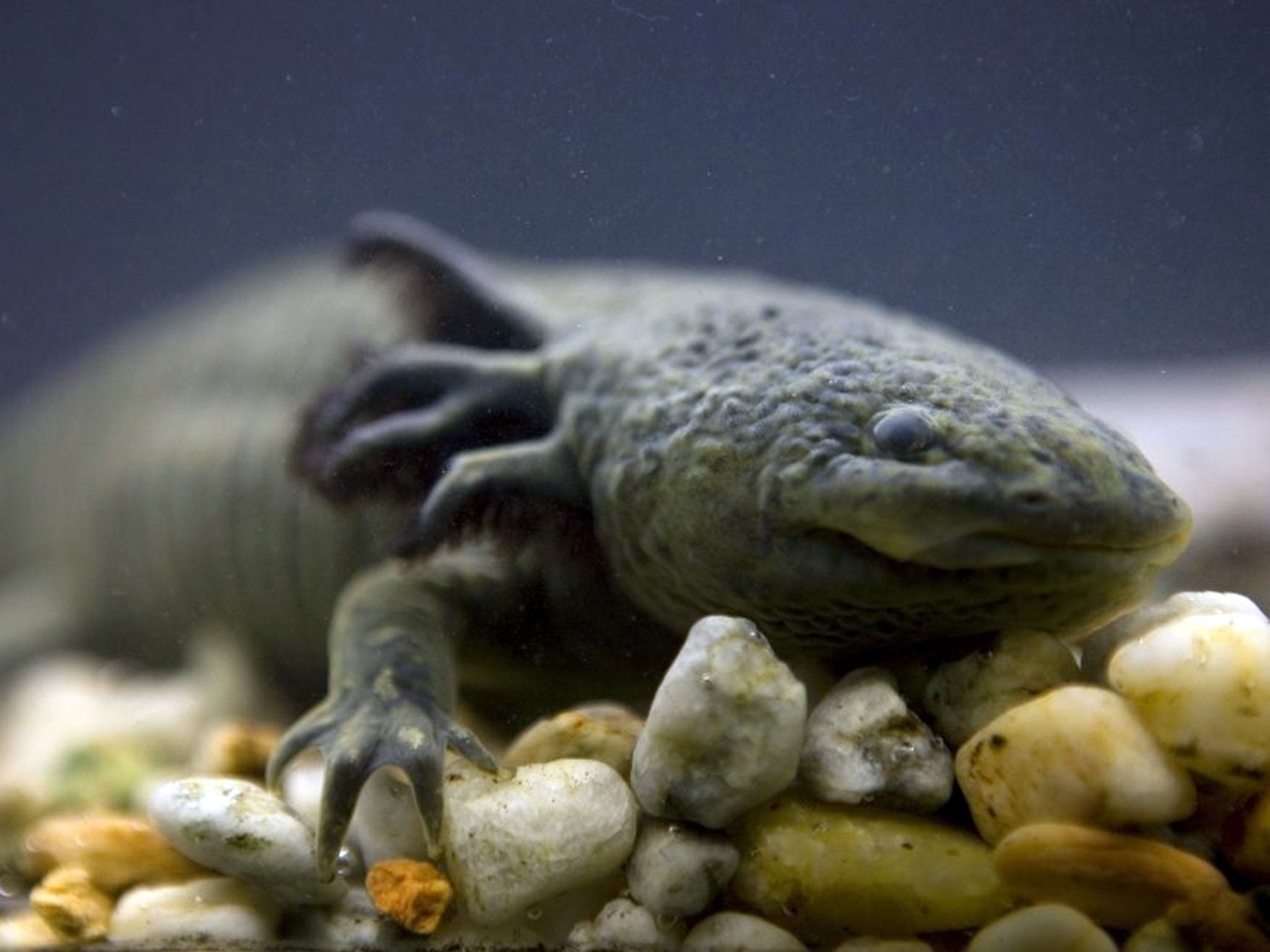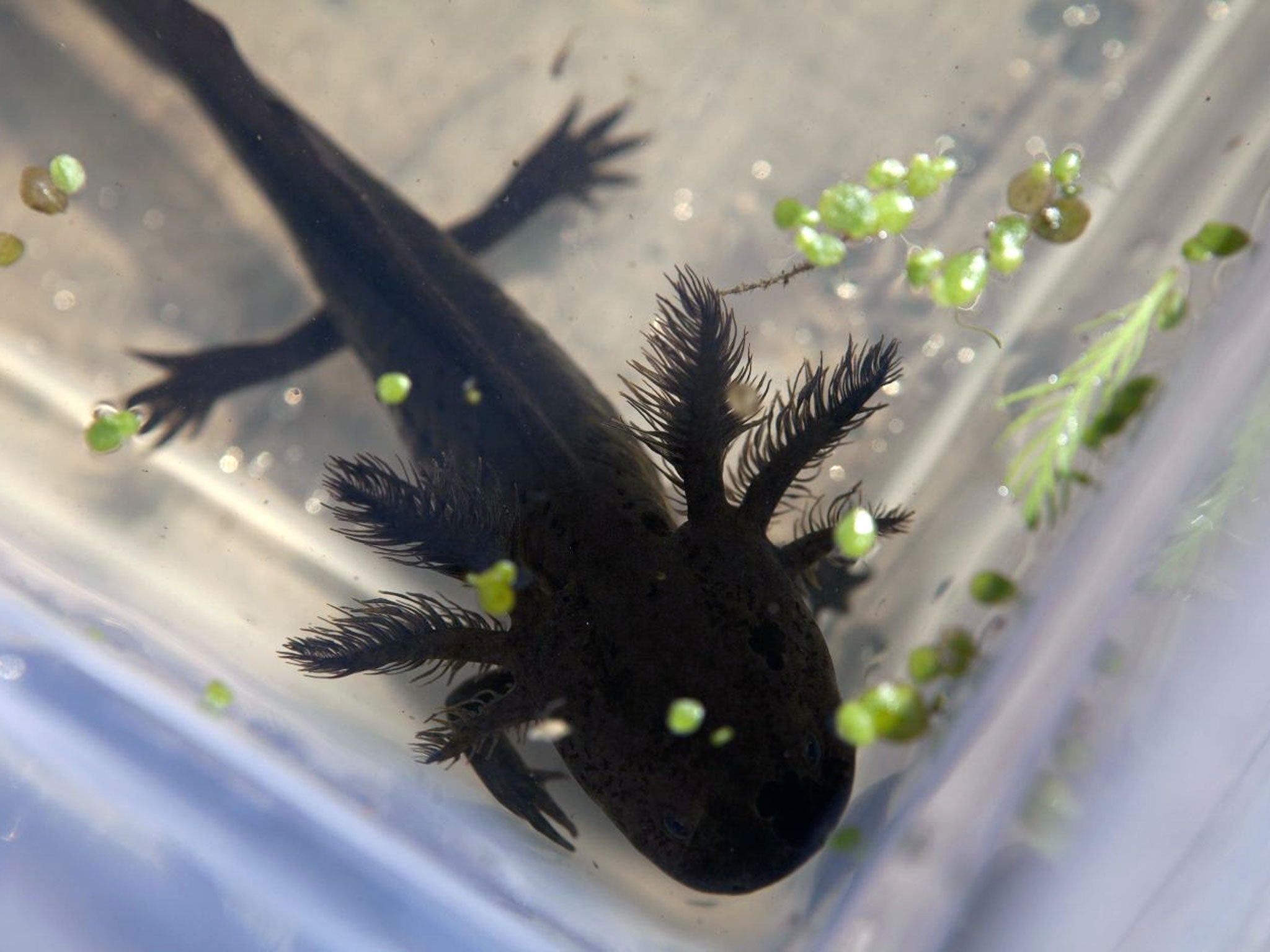Axolotl found in Mexico City lake after scientists feared it only survived in captivity
The amphibian is important in scientific research because of its ability to regenerate severed limbs

Your support helps us to tell the story
From reproductive rights to climate change to Big Tech, The Independent is on the ground when the story is developing. Whether it's investigating the financials of Elon Musk's pro-Trump PAC or producing our latest documentary, 'The A Word', which shines a light on the American women fighting for reproductive rights, we know how important it is to parse out the facts from the messaging.
At such a critical moment in US history, we need reporters on the ground. Your donation allows us to keep sending journalists to speak to both sides of the story.
The Independent is trusted by Americans across the entire political spectrum. And unlike many other quality news outlets, we choose not to lock Americans out of our reporting and analysis with paywalls. We believe quality journalism should be available to everyone, paid for by those who can afford it.
Your support makes all the difference.A rare, salamander-like amphibian has been spotted in its only known natural habitat, after researchers feared the creature had disappeared from the wild.
Mexican biologists have seen, but not caught, two axolotls during a second attempt to find them in the Xochimilco network of lakes and canals of Mexico City.
The researchers took to the muddy waters of lake Xochimilco in small boats last year, and searched for weeks for the amphibian, but to no avail.
But biologist Armando Tovar Garza, of Mexico's National Autonomous University, said that members of the team carrying out the search had seen two axolotls during the first three weeks of a second survey expected to conclude in April.
“We weren't able to capture them...because the behaviour of the axolotl makes them very difficult to capture,” he said.
“But we have had two sightings. That's important, because it tells us we still have a chance.”

The axolotl has a slimy tail, plumage-like gills and mouth that curls into an odd smile, and is known as the “water monster” or the “Mexican walking fish”
Growing up to a foot long, axolotls use four stubby legs to drag themselves along the bottom or thick tails to swim in Xochimilco's murky channels while feeding on aquatic insects, small fish and crustaceans.
It is regarded as important in scientific research because of its ability to regenerate severed limbs.
Some axolotls still survive in aquariums, water tanks and research labs, but experts said those conditions are not the best, because of interbreeding and other risks.
Releasing captive-bred axolotls into the wild is not an option as it could spread a fatal fungus and reduce their genetic diversity.
The “floating gardens” of earth piled on reed mats that the Aztecs built to grow crops where axolotols live in the wild, are now suffering from pollution, urban sprawl and invasive species.
Mr Tovar Garza said some small mutations, possibly the result of interbreeding, have already been seen.
Alarmed by the creature's falling numbers in recent years, researchers built axolotl “shelters” in Xochimilco to help them breed in the cleanest part of their remaining habitat.
Sacks of rocks and reedy plants act as filters around a selected area, and cleaner water is pumped in, to create better conditions.

The Mexican Academy of Sciences said a 1998 survey found an average of 6,000 axolotls per square kilometre, a figure that dropped to 1,000 in a 2003 study and 100 in 2008.
Additional reporting by PA
Join our commenting forum
Join thought-provoking conversations, follow other Independent readers and see their replies
Comments